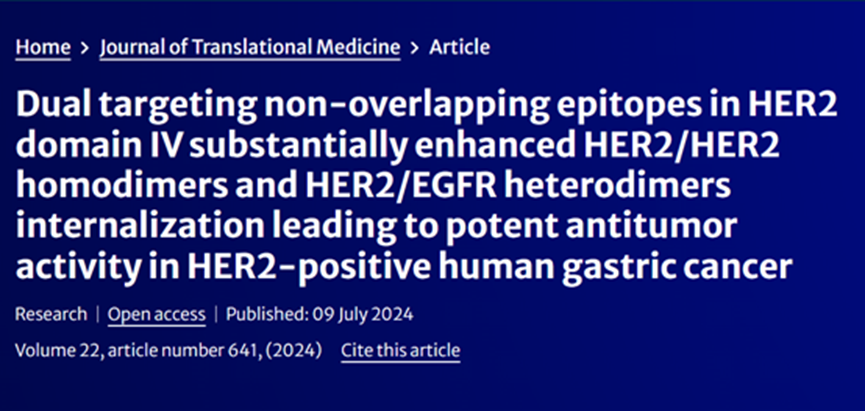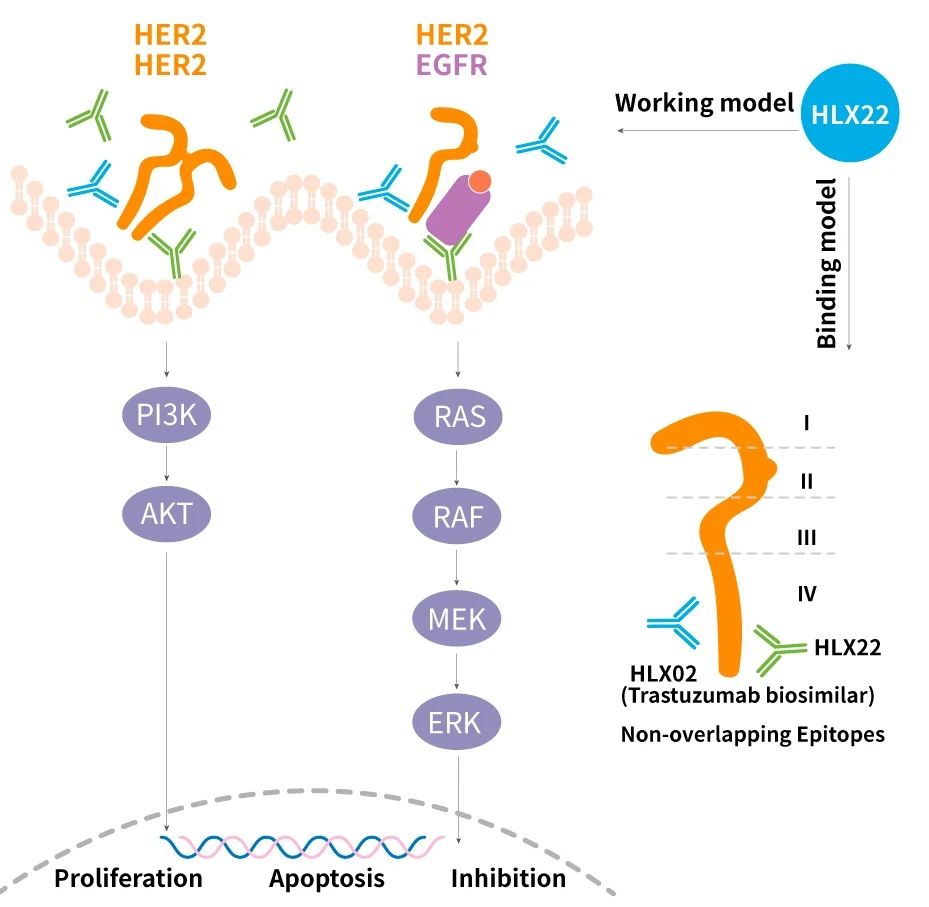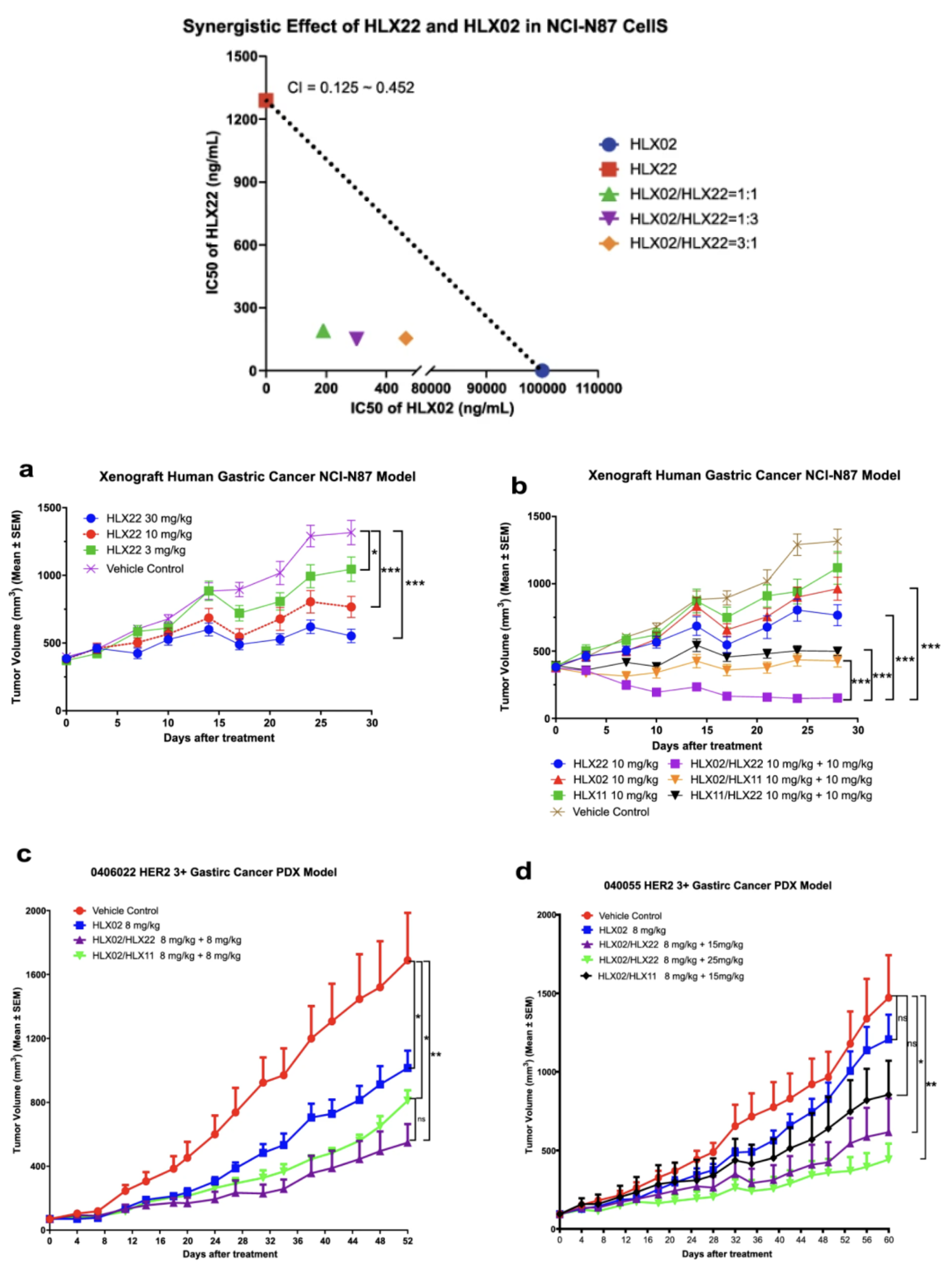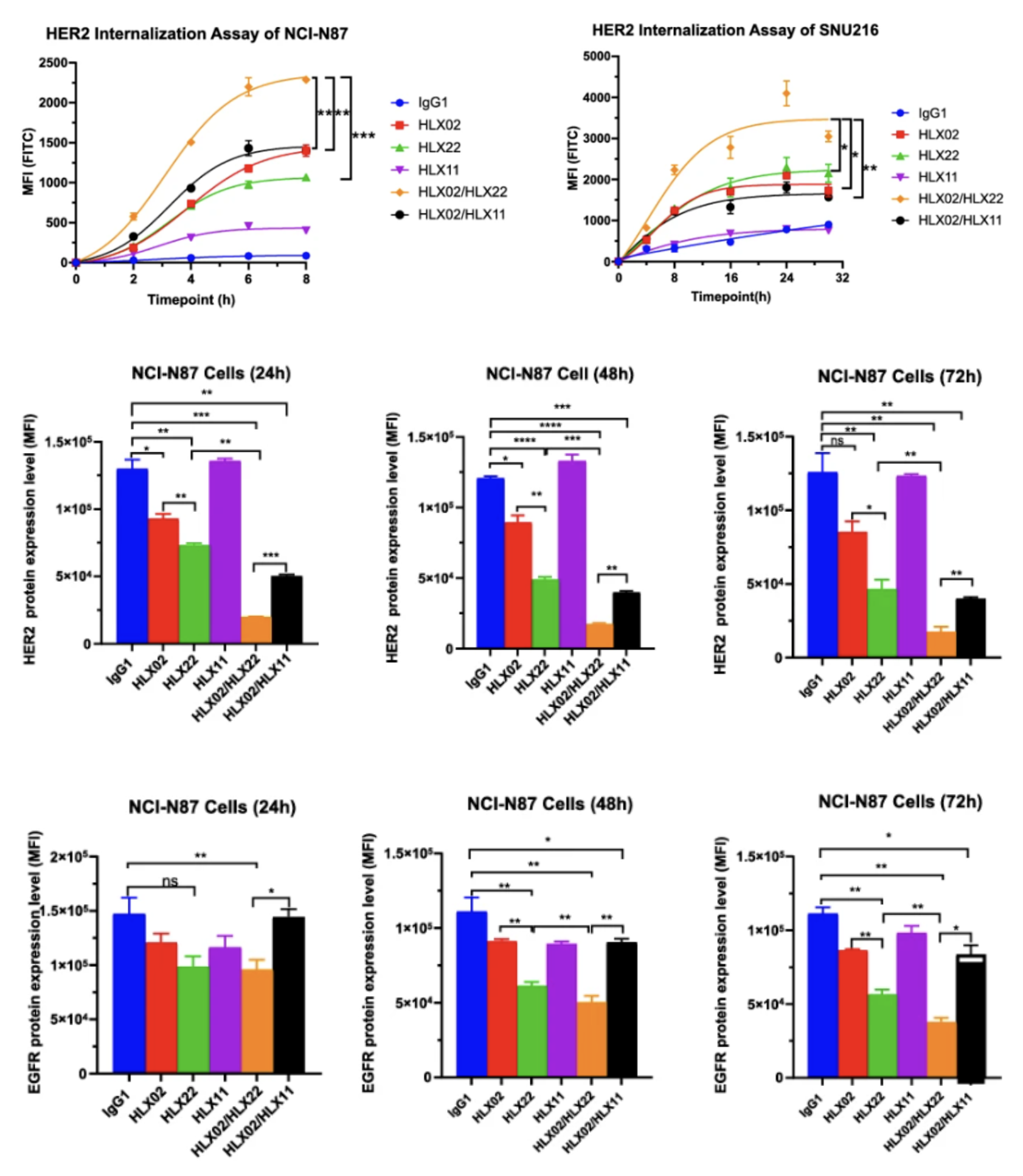Recently, Journal of Translational Medicine, a prestigious medical journal, published a research article describing mechanism of action (MOA) of Henlius' innovative anti-HER2 monoclonal antibody (mAb), HLX22, in dual HER2 blockade therapy. The research analysed the structure foundation and mechanisms of action associated with HLX22, further validating its potential in combination with trastuzumab in the first-line treatment of HER2-positive gastric/gastroesophageal junction (G/GEJ) cancer to benefit more patients worldwide.

Trastuzumab, the first HER2-targeted cancer therapy, was introduced in clinical practice and revolutionised the treatment of HER2-positive breast cancer and gastric cancer. Trastuzumab in combination with pertuzumab and docetaxel has also verified their synergistic effect in the treatment of HER2-positive metastatic breast cancer, and the combination regimen is now the standard of care in this indication. However, a phase 3 trial that assessed the efficacy of pertuzumab versus placebo in combination with trastuzumab and chemotherapy in first-line HER2-positive metastatic gastric or G/GEJ cancer showed negative result, indicating intrinsic differences in the tumour biology of HER2-positive advanced gastric cancer and HER2-positive breast cancer. Up to date, no dual HER2 blockade therapy for the treatment of HER2-positive gastric cancer has been approved.

HLX22 is an innovative anti-HER2 mAb that was introduced from AbClon, Inc. and further researched and developed by Henlius. HLX22 can bind to HER2 subdomain IV at a non-overlapping binding site from trastuzumab, which avoids a competitive binding between HLX22 and trastuzumab to HER2 and allows the simultaneous binding, contributing to a synergistic effect of the dual targeting therapy. Both in vitro and in vivo studies demonstrated that HLX22 in combination with trastuzumab (HLX02) exhibit enhanced anti-tumour activity and induced cancer cell apoptosis in HER2-positive human gastric cancer cell lines, gastric cancer CDX models, and PDX models.

Epidermal growth factor receptor (EGFR) family signaling contributes to neoplastic cell growth, malignant transformation, and resistance to chemotherapy[1]. Human epidermal growth factor receptor 2 (HER2) belongs to human EGFR family, including EGFR (HER1), HER3, and HER4. Upon ligand binding, the EGFR family members can homodimerise or heterodimerise with each other to form several receptor complexes. The dimerisation of EGFR family members results in protein phosphorylation on their intracellular domain that activates intracellular signaling cascades, which ultimately promote the expression of target genes that regulate various cellular processes influencing growth, proliferation, migration and survival[2,3]. Remarkably, HLX22 and trastuzumab (HLX02) simultaneously bound to HER2 subdomain IV and promoted HER2/HER2 homodimer internalisation and HER2/EGFR heterodimer internalisation, resulting in a 40%–80% increase in HER2 internalisation. In contrast, pertuzumab disrupted the formation of HER2 heterodimer. Therefore, trastuzumab (HLX02) and HLX11(pertuzumab biosimilar) combination disrupted HER2/EGFR heterodimer formation. Consequently, trastuzumab (HLX02) and HLX11(pertuzumab biosimilar) combination only promoted HER2 internalisation but could not promote EGFR internalisation together. This might be one of the reasons why trastuzumab and pertuzumab combination failed in gastric cancer clinical trial.

Results of the phase 1 clinical trial, published in Investigational New Drugs, also showed that HLX22 was well tolerated with favorable pharmacokinetic properties in patients with advanced HER2 overexpressing solid tumours, and no dose-limiting toxicity occurred during the study [4]. As of now, the phase 2 study of HLX22 (HLX22-GC-201) is ongoing and its results were released at the 2024 ASCO Gastrointestinal Cancers Symposium (ASCO GI), MED, a flagship medical journal published monthly by Cell Press, and the 2024 ESMO Gastrointestinal Cancers Congress (ESMO GI). The results showed that add HLX22 to trastuzumab (HLX02) and chemotherapy improved efficacy in patients with HER2-positive G/GEJ cancer in the first-line setting, with a manageable safety profile. Recently, the investigational new drug application (IND) for phase 3 international multicentre clinical study of HLX22 in combination with trastuzumab and chemotherapy for the first-line treatment of HER2-positive advanced gastric cancer has been approved by the National Medical Products Administration (NMPA) and the United States Food and Drug Administration (FDA).
Looking forward, the company will further validate the efficacy and safety of the dual HER2 blockade therapy of HLX22 in clinical trials, reshaping the paradigm for treatment of HER2-positive gastric cancer. Meanwhile, the company will actively improve efficiency through innovations, focusing on patients and unmet medical needs to bring more high-quality and affordable therapies to patients worldwide.
【Reference】
[1]. Hudis CA. Trastuzumab--mechanism of action and use in clinical practice. N Engl J Med. 2007;357(1):39-51.
[2]. trastuzumab: the rationale way to synergy. An Acad Bras Cienc. 2016;88 Suppl 1:565-77.
[3]. Fabi A, Mottolese M, Segatto O. Therapeutic targeting of ERBB2 in breast cancer: understanding resistance in the laboratory and combating it in the clinic. J Mol Med (Berl). 2014;92(7):681-95.
[4]. Zhu X, Ding Y, Wang Q, Yang G, Zhou L, Wang Q. HLX22, an anti-HER-2 monoclonal antibody, in patients with advanced solid tumors overexpressing human epidermal growth factor receptor 2: an open-label, dose-escalation, phase 1 trial. Invest New Drugs. 2023.
About Journal of Translational Medicine
Journal of Translational Medicine is an open access journal publishing articles focusing on information derived from human experimentation so as to optimise the communication between basic and clinical science. The journal covers all areas of translational medicine and has several specialized sections.
